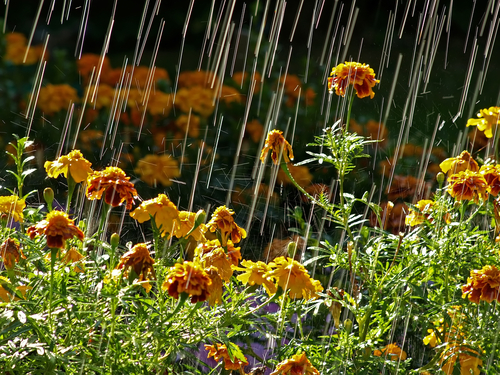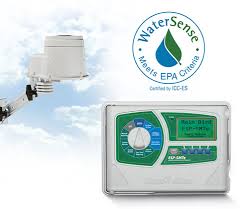Install Weather Based Irrigation Control
Watering the garden on a rainy day just doesn’t make sense. This not only overwaters your plants, but also wastes water and creates runoff of soil and nutrients. However, that is exactly what most automatic irrigation systems do unless you manually turn them off. Installing a weather-based controller that detects rain and overrides your sprinkler system saves water and protects your plants from over- or even under-watering. This saves you water, money and time!
Your Impact
Action Steps & Tips
Introduction
Watering the garden on a rainy day just doesn’t make sense. This not only overwaters your plants, but also wastes water and creates runoff of soil and nutrients. However, that is exactly what most automatic irrigation systems do unless you manually turn them off. Installing a weather-based controller saves water and protects your plants from over- or even under-watering. There are two options for weather-based control—a simple rainfall shutoff device or a smart weather-based control system.
Weather based irrigation control systems:
-
Saves time
-
Keep your plants healthy and resilient
-
Save money and precious water resources
1Learn about the different types of weather sensors
Rainfall shutoff devices. Rainfall shutoff devices have sensors that automatically detect moisture either from rain or the soil, and then turn the irrigation system off. These devices are now available for installation on almost all irrigation systems. They are relatively inexpensive, costing between $30-$100, and are easy to install.
This is an easy solution, however, for a bit more cost than a rainfall shutoff device, $100-$200, you can now install a full weather-based controller that provides more features and water savings.
Weather-based irrigation controllers. Weather-based controllers are smart irrigation systems which act like a thermostat for your sprinkler system. They check current weather and/or soil conditions and tailor watering schedules to current conditions. Your system can automatically increase or decrease the watering level, as needed. Extra bonus—you won’t have to remember how to reprogram your irrigation system each season!
There are two different ways controllers collect this data—either on-site or signal-based. On-site systems use sensors to collect data on temperature, moisture, and sunlight in your yard. These controllers may also have a chip that includes a 20-year history of weather patterns, enabling them to set watering levels based on local conditions.
Signal-based controllers check current local weather reports from radio, telephone, web or other technology, and update the irrigation levels based on these local reports. This takes the guesswork out of irrigation and saves a lot of water in the end. With proper installation and programming, you can save water and money without having to think about it.
2Choose the right controller, install and save
Choosing the right system. Selecting a smart irrigation system might seem daunting. The most important thing to look for is WaterSense approved systems that meet the EPA’s criteria on water usage. Learn more on the EPA WaterSense website. Not all irrigation controllers are created equal—some are more complicated to install and program. Check out consumer reviews to find one that meets your budget, water needs, and preferences on the level of programming and complexity.
Purchase and Install your controller. Many controllers can be installed on your own, however, sometimes there is wiring required and programming can be complex. If you want to go the DIY route, check out the installation manual and look for a controller where you feel comfortable with the installation requirements. If you are not sure, a licensed landscaping professional should be able to help.
Extra Credit: Add a drip system. The average home can save up to 8,000 gallons of water a year with your new weather-based irrigation control system. Now take the next step and upgrade to a drip irrigation system. With these two systems, you will be as water efficient as you can get and save money and precious water resources! Check out the Install Efficient Irrigation action to learn more.



